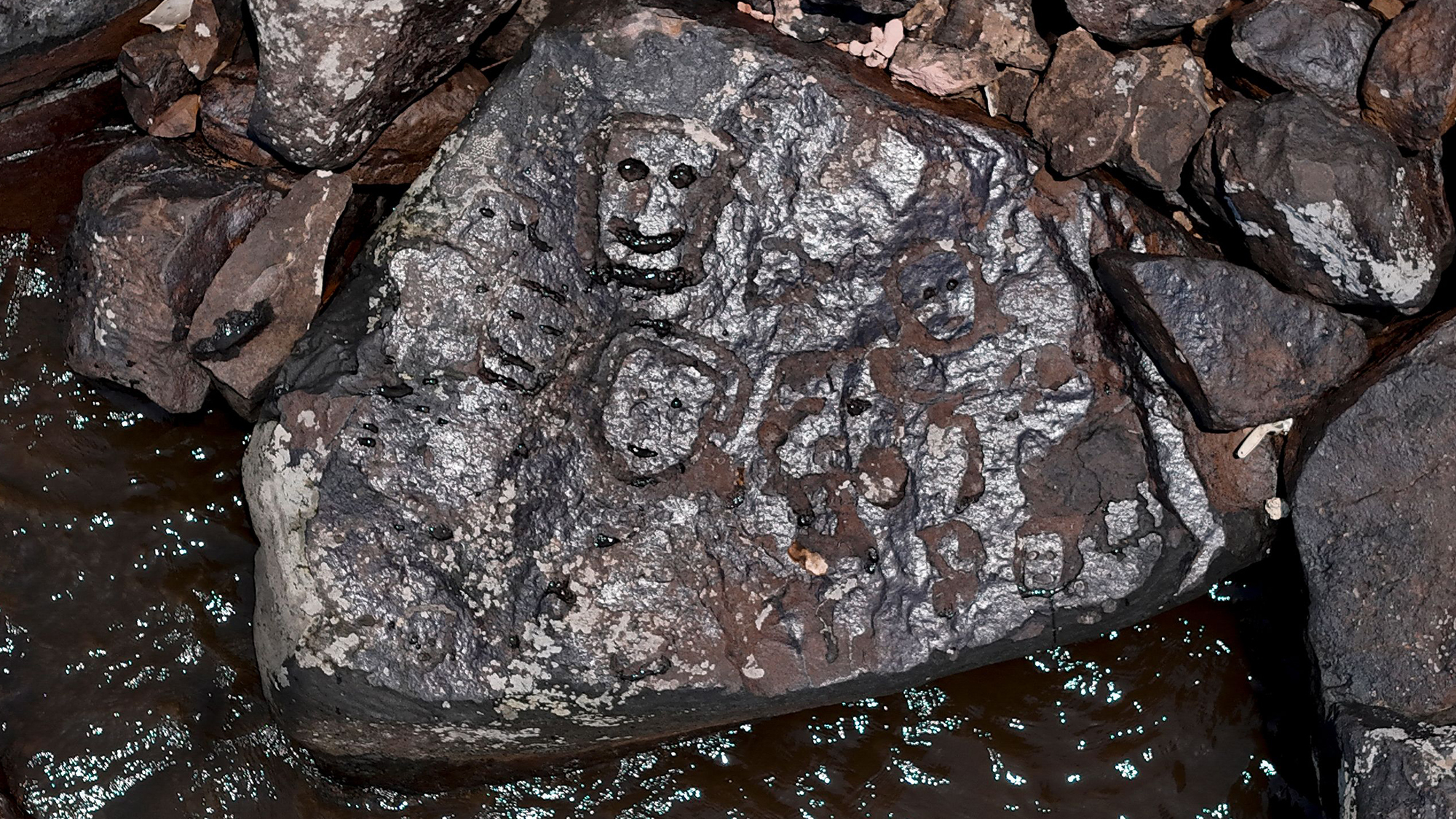

In parts of Brazil, water levels are so low due to severe drought that previously submerged ancient rock carvings are visible for the first time since 2010. The petroglyphs including depictions of animals and other natural objects are located on the shores of Rio Negro, at an archeological site known as the Ponto das Lajes–Place of Slabs– near where the Rio Negro and the Solimões river flow into the Amazon River.
These carvings were previously seen during a drought 13 years ago, when the Rio Negro’s water levels dropped to what was then an all-time known low of 44.7 feet. As of October 23, the water levels in the Rio Negro are at 42.2 feet. Some experts predict that the drought could last until early 2024.
[Related: The Amazon is on the brink of a climate change tipping point.]
According to the BBC, archaeologist Jaime Oliveira told local media that the markings were carved by people who lived in the area in pre-Columbian times. “This region is a pre-colonial site which has evidence of occupation dating back some 1,000 to 2,000 years. What we’re seeing here are representations of anthropomorphic figures.”
In addition to the faces and animals, grooves in one of the rocks were potentially used by Indigenous people in the area as a whetstone to sharpen their arrows. Carlos Augusto da Silva of the Federal University of Amazonas identified 25 groups of these carvings on a single rock.
Pieces of ceramics that archaeologists believe are thousands of years old have also been found at the site. The area was home to large Indigenous villages before European colonists arrived in the Seventeenth Century.
[Related: Historic drought brings eerie objects and seawater to the surface of the Mississippi River.]
The carvings re-emerged earlier in October amid this unusually dry season. A similar situation arose in Europe in the summer of 2022, when one of the worst droughts in 500 years revealed “hunger stones,” in rivers across the continent. These stones covered in engraved markings show the water levels from previous dry times and some come with grim warnings. Near the town of Děčín in the northern Czech Republic, one haunting stone read “If you see me, then weep,” or “Wenn du mich siehst, dann weine.”
Scientists attribute this drought in South America to an El Niño weather pattern and warming in the North Atlantic linked to human-made climate change.
Due to the low water levels, endangered pink river dolphins in Lake Tefé, Brazil are at risk of suffocation and a major hydropower plant near Porto Velho has also been shut down. Tens of thousands living in remote communities who can only travel by boat are also being isolated from the rest of the world.
These dry conditions are also accelerating the destruction of the most biodiverse rainforest on Earth. Parts of the Amazon rainforest have already begun to change from humid ecosystems that store large amounts of heat-trapping gasses into more dry forests that release these gasses into the atmosphere. Climate change, deforestation and fires have made it harder for the Amazon region as a whole to recover from severe droughts.
“This is a catastrophe of lasting consequences,” Luciana Vanni Gatti, a scientist at Brazil’s National Institute of Space Research, told The New York Times. “The more forest loss we have, the less resilience it has.”
